1979 Honda CBX Motorcycle
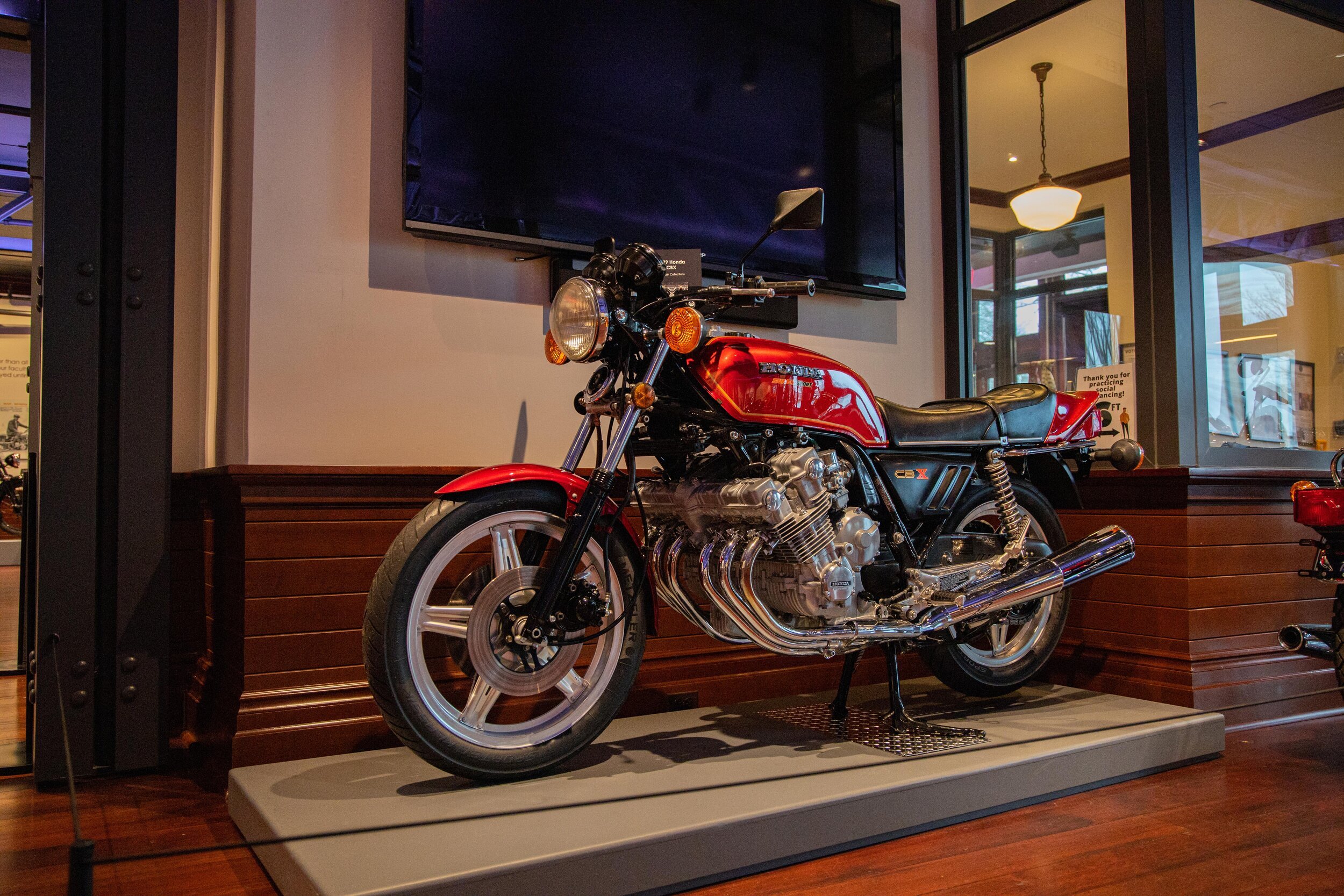
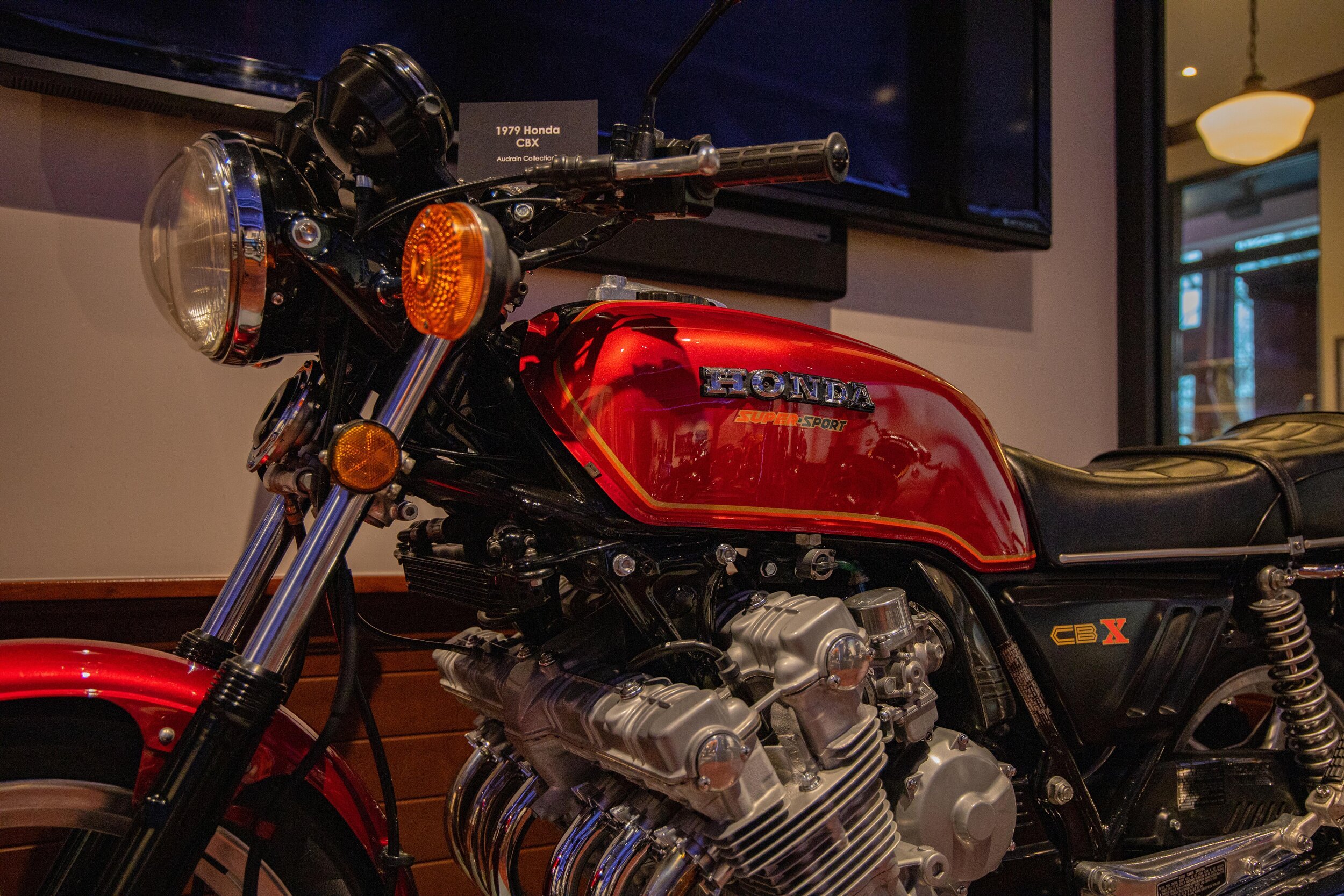
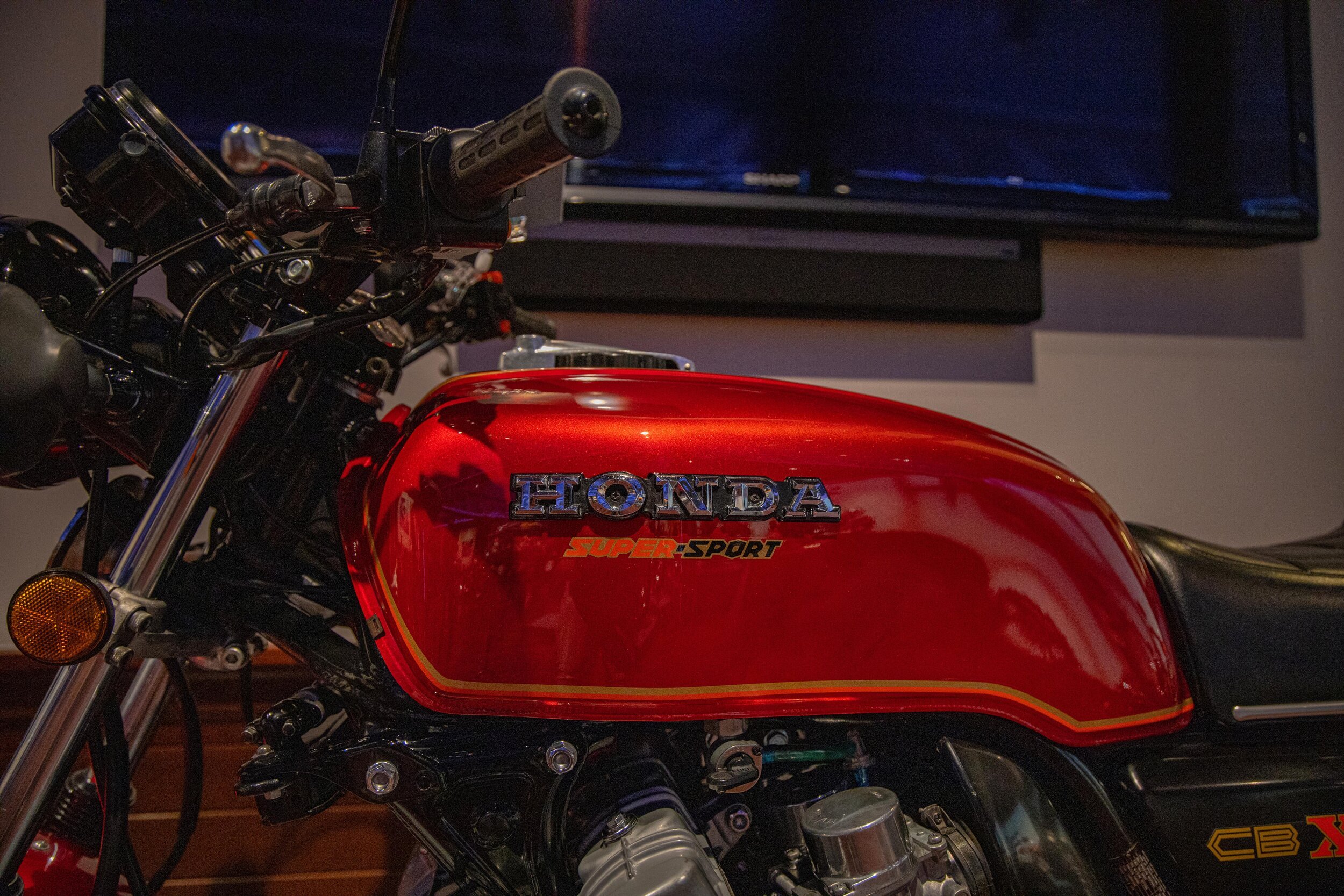
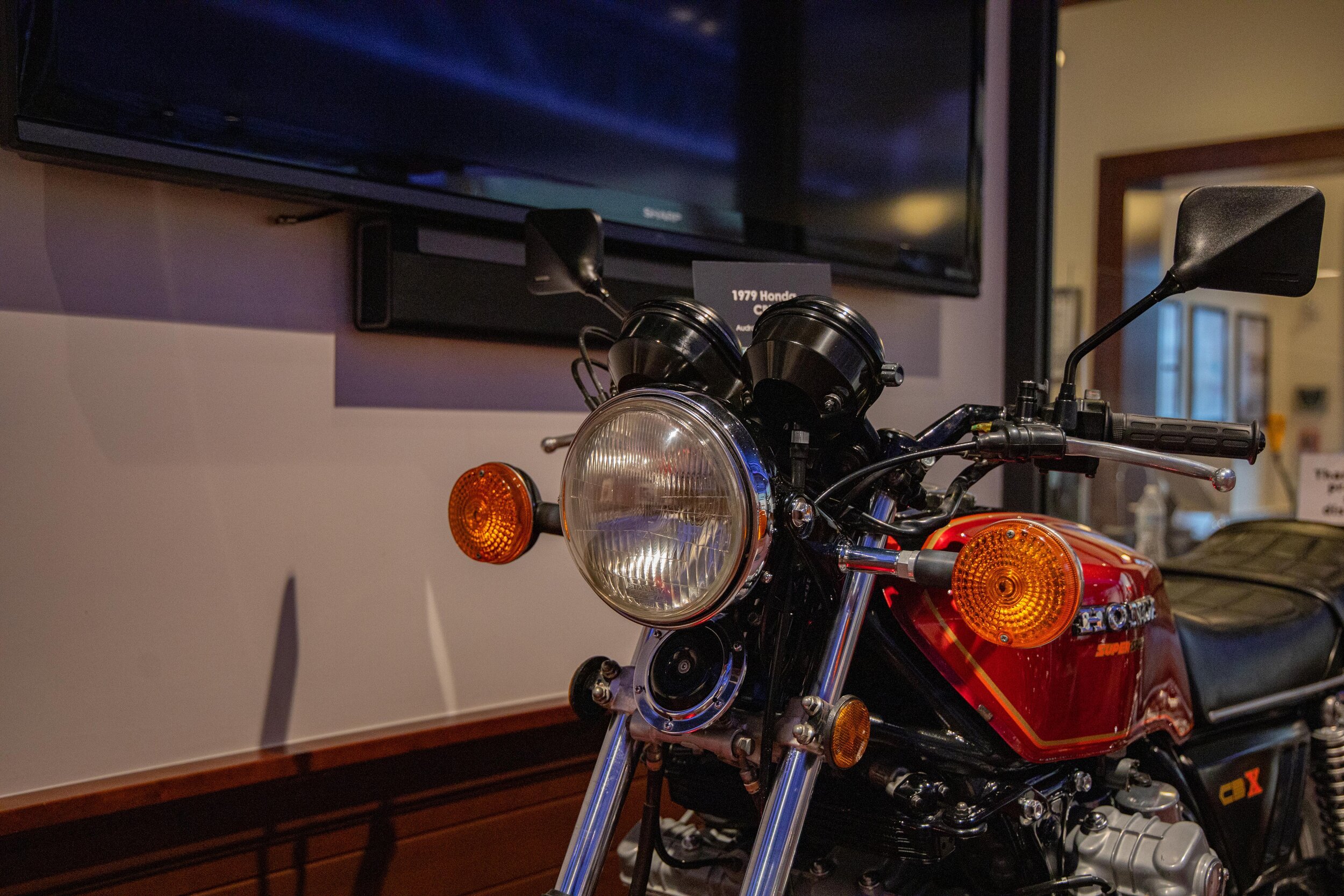
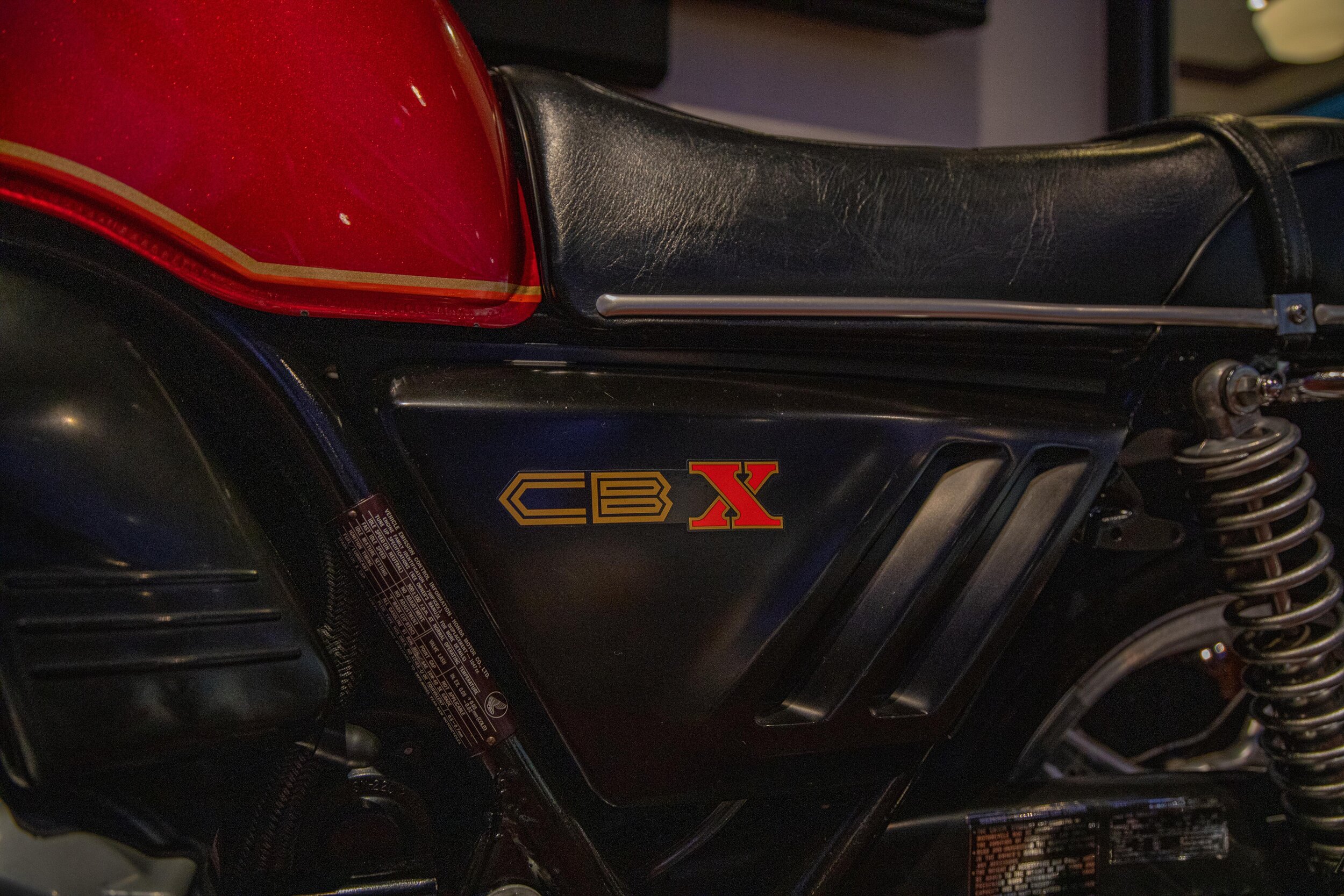
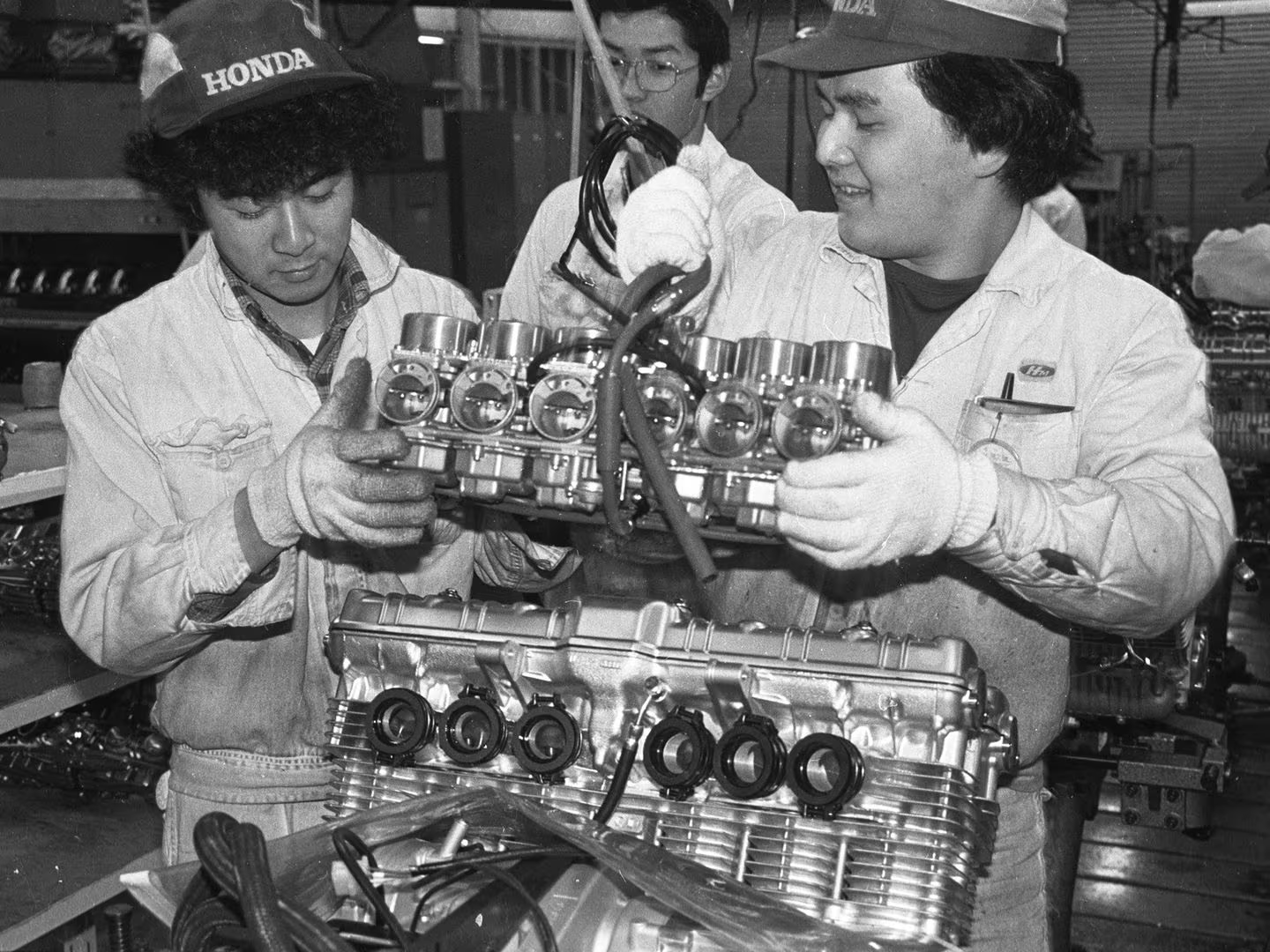
Honda’s first 6-cylinder production motorcycle.
Twin Cam 24 Valve Engine.
Fastest production motorcycle in 1979.
Lightweight aluminum Comstar wheels.
Frame uses engine as stressed structural component.
This first year edition of the Honda CBX pushed the manufacturer to the top of the Superbike list when Honda unveiled the radical inline transverse 6-cylinder as its first production bike featuring dual overhead cams with 4 valves per cylinder. Honda engineer, Soichiro Irimajiri drew heavily from championship Grand Prix racing experience with multi-cylinder engines, including the legendary RC 165 250cc 6 cylinder, when developing the engine for the CBX. With a throaty 6-into-2 exhaust system and 6 individual Keihin constant velocity carburetors feeding the 1047cc powerplant, the CBX was introduced in late 1978 with claims of horsepower figures close to 105 bhp. Honda had faced an uphill battle in the performance wars as Yamaha’s XS1100, Kawasaki Z1-R 1000, and Suzuki’s GS1000 were all available as 1978 models with 4-cylinder two cam engines. Honda’s answer was a 6-cylinder engine that allowed for a fast revving, smooth power delivery but had the downside of being very wide and heavy. Much work was done to reduce width of the engine, including placing the alternator on a separate jackshaft located behind and above the crankshaft making the engine much narrower. At the bike’s debut, it was touted as the fastest production motorcycle available to the public.
For all the attention to the motorcycle’s engine and speed, much of the rest of the bike utilized traditional but proven technologies. The front suspension came with telescopic front forks with twin disk brakes mounted on an assembled aluminum Comstar wheel, with the rear having twin shock absorbers and a single disk brake. To keep the center of gravity low, the CBX used the engine as a stressed frame member and eliminated the need for frame tubing beneath the engine. With such a high horsepower engine, it was surprising that Honda used relatively narrow wheels and tires on the CBX in an effort to keep weight down but at the expense of providing less traction. Honda also used aluminum rather than steel for steering triple clamps and handlebars as a weight saving.
When the CBX hit the showroom floor, it provided the visual and engineering excitement that Honda needed to remain viable in the performance bike market. Honda simultaneously released DOHC 900 and 750cc 4-cylinder models that resembled the CBX’s styling but lacked the “wow factor” of the massive 6-cylinder powerplant. The smaller displacement bikes were more affordable and sold well as sales rode the coattails of the CBX appeal. While critics would claim the CBX was excessive in complexity and weight, history showed that Honda built an extreme motorcycle to close out the decade as an engineering statement that would never be forgotten.
Honda CBX Specifications:
Engine: Inline 6 Cylinder Double Overhead Cam, 4 valves per cylinder, 6 Keihin CV Carburetors, 5 speed manual transmission
Performance: Standing ¼ mile 11.36 seconds at 117mph
Horsepower: 105bhp rear wheel
Top Speed: 140 mph
Curb weight: 600 lbs

